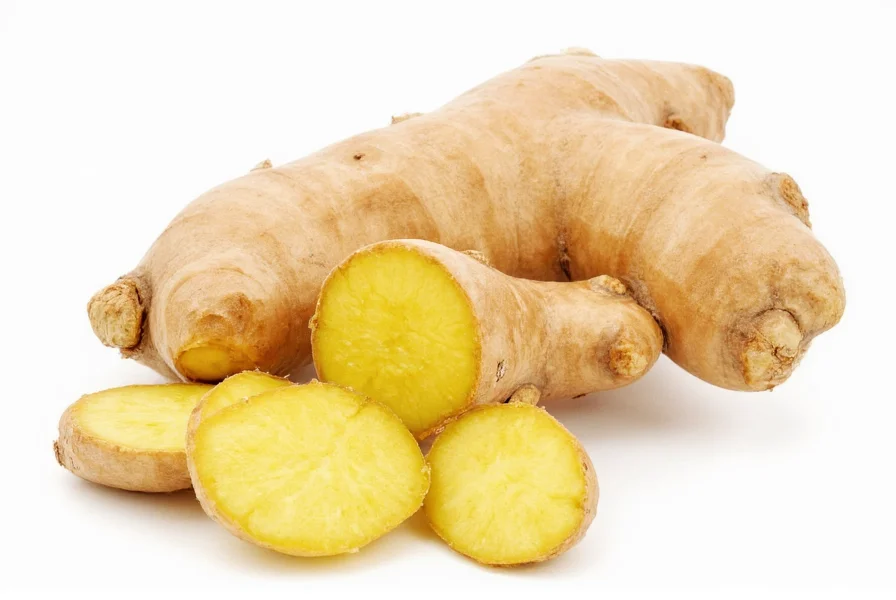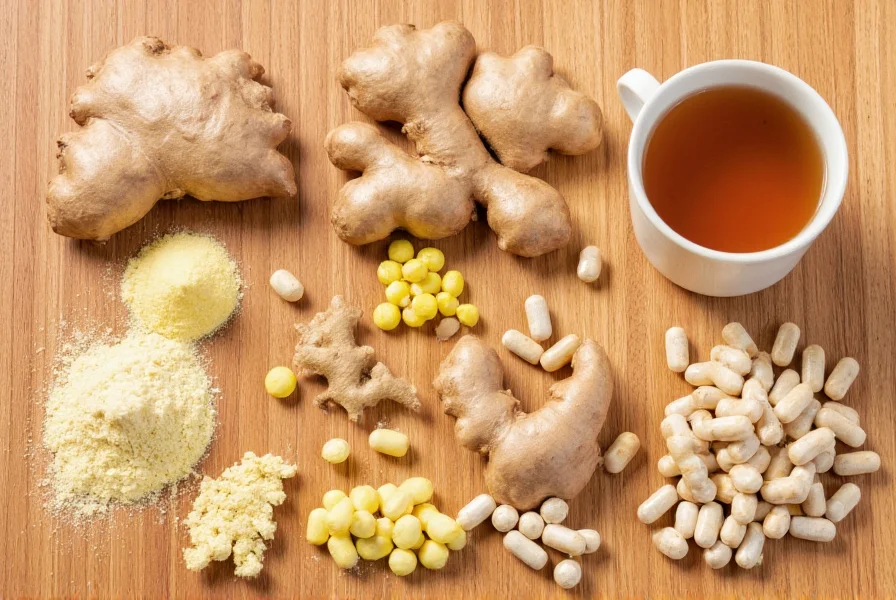Ginger (Zingiber officinale), a flowering plant whose rhizome serves as a popular spice and medicinal herb, has been valued across cultures for over 5,000 years. This versatile root contains bioactive compounds like gingerols and shogaols that provide both distinctive flavor and therapeutic properties. Understanding what ginger is used for requires examining both its culinary applications across global food traditions and its evidence-based health benefits.
Culinary Applications of Ginger
Chefs and home cooks worldwide incorporate ginger in various forms to enhance flavor profiles. Fresh ginger root adds zesty warmth to Asian stir-fries, Indian curries, and Caribbean jerk seasonings. Its versatility extends beyond savory dishes—ginger features prominently in baked goods like gingerbread, cookies, and cakes, while crystallized ginger serves as a popular confection.
| Ginger Form | Culinary Uses | Flavor Profile |
|---|---|---|
| Fresh root | Stir-fries, teas, marinades, dressings | Bright, spicy, slightly sweet |
| Dried powder | Baking, spice blends, rubs | Warmer, more concentrated |
| Candied/crystallized | Desserts, snacks, garnishes | Sweet with spicy undertones |
| Pickled | Sushi accompaniment, condiments | Tangy, milder heat |
Medicinal Uses Supported by Research
When exploring what ginger is used for medicinally, scientific evidence reveals several validated applications. Clinical studies demonstrate ginger's effectiveness for various digestive issues, particularly nausea relief. Research published in the American Journal of Obstetrics and Gynecology confirms ginger's safety and efficacy for pregnancy-related nausea, with most studies using 1-1.5 grams daily.
For individuals seeking natural remedies for motion sickness or postoperative nausea, ginger provides a non-pharmaceutical option. A systematic review in Nutrition Reviews analyzed 12 studies showing ginger significantly reduced nausea intensity compared to placebos. The antiemetic properties appear most effective when consumed before nausea onset.
Ginger's anti-inflammatory properties make it valuable for managing osteoarthritis symptoms. A study in Arthritis & Rheumatism found participants taking 255 mg of ginger extract twice daily experienced significant pain reduction after three months. The gingerols in fresh ginger inhibit inflammatory pathways similar to nonsteroidal anti-inflammatory drugs (NSAIDs), but with fewer gastrointestinal side effects.

Traditional Remedies Across Cultures
Traditional Chinese Medicine has employed ginger for over 2,000 years to treat colds, flu, and digestive complaints. Practitioners often combine fresh ginger with other herbs to create warming formulas for respiratory conditions. In Ayurvedic medicine, ginger serves as a "universal medicine" for balancing the three doshas, particularly for improving digestion and circulation.
African traditional medicine utilizes ginger for pain relief and as an antimicrobial agent. Nigerian healers prepare ginger infusions for malaria symptoms, while South African traditional practitioners use ginger poultices for wound healing. These traditional applications often inform modern scientific investigations into ginger's potential therapeutic uses.
Practical Applications and Dosage Guidelines
Understanding how to use ginger effectively requires knowledge of appropriate forms and dosages. For nausea relief, consuming 1-2 grams of fresh ginger (about a 1-inch slice) in tea or capsule form 20-30 minutes before potential nausea onset provides optimal results. Ginger tea preparation involves steeping freshly grated ginger in hot water for 5-10 minutes, with lemon and honey enhancing both flavor and therapeutic effects.
When addressing inflammation, consistent daily consumption yields better results than occasional use. Most clinical trials for osteoarthritis use standardized extracts providing 50-200 mg of gingerols daily. For digestive support after meals, chewing a small piece of crystallized ginger or drinking ginger tea aids digestion through stimulation of digestive enzymes.

Safety Considerations and Potential Interactions
While generally safe, understanding what ginger is used for includes recognizing appropriate usage limits. Consuming more than 4 grams daily may cause heartburn, diarrhea, or mouth irritation in sensitive individuals. Those taking blood-thinning medications should consult healthcare providers before using therapeutic ginger doses, as it may enhance anticoagulant effects.
Pregnant women can safely use ginger for morning sickness within recommended limits (up to 1 gram daily), but should avoid excessive consumption near delivery due to potential bleeding risks. Individuals with gallstones should consult physicians before regular ginger consumption, as it may increase bile production.
Conclusion
Ginger's dual role as both culinary staple and medicinal herb makes it uniquely valuable across global cultures. From enhancing the flavor of diverse cuisines to providing evidence-based relief for nausea, inflammation, and digestive issues, this versatile root continues to demonstrate its worth. When considering what ginger is used for, both traditional wisdom and modern science confirm its multifaceted applications for improving health and enriching food experiences.
Frequently Asked Questions
What is ginger root used for medicinally?
Ginger root is medicinally used for nausea relief (including morning sickness and motion sickness), reducing inflammation in osteoarthritis, improving digestion, and potentially lowering blood sugar levels. Scientific research supports its effectiveness for pregnancy-related nausea and postoperative nausea, with typical medicinal doses ranging from 1-2 grams daily.
How does ginger help with digestion?
Ginger stimulates digestive enzymes and increases gastrointestinal motility, helping food move through the digestive tract more efficiently. It activates saliva, bile, and gastric enzyme production, which can reduce bloating and discomfort after meals. Consuming ginger before or with meals may prevent indigestion, while ginger tea after eating aids digestion and reduces gas formation.
Can ginger reduce inflammation effectively?
Yes, ginger contains potent anti-inflammatory compounds called gingerols that inhibit inflammatory pathways in the body. Clinical studies show ginger extract (providing 50-200 mg gingerols daily) significantly reduces pain and stiffness in osteoarthritis patients after 3-6 months of consistent use. Its anti-inflammatory effects work similarly to NSAIDs but with fewer gastrointestinal side effects.
What's the difference between fresh and dried ginger uses?
Fresh ginger contains higher levels of gingerols, making it more effective for nausea relief and anti-inflammatory purposes. Dried or powdered ginger has higher concentrations of shogaols, which are more potent for digestive issues but less effective for nausea. Culinary applications differ too—fresh ginger provides brighter, sharper flavor in stir-fries and teas, while dried ginger works better in baking and spice blends.
How much ginger should I take for nausea relief?
For nausea relief, research shows 1-1.5 grams of fresh ginger (about a 1-inch slice) consumed 20-30 minutes before potential nausea onset is most effective. This could be in tea form, as capsules, or chewed directly. For pregnancy-related nausea, up to 1 gram daily is considered safe. Higher doses don't necessarily provide additional benefits and may cause mild digestive discomfort.











 浙公网安备
33010002000092号
浙公网安备
33010002000092号 浙B2-20120091-4
浙B2-20120091-4